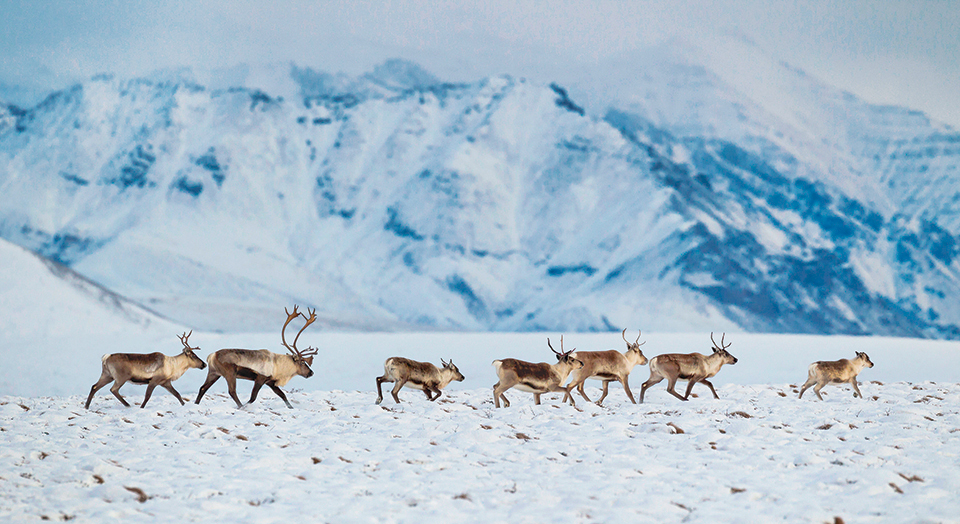Caribou Migration
 Just before the winter winds whip in from the polar seas and sweep across the tundra, some 200,000 caribou from the Porcupine herd begin moving south. They leave the coastal plain of the Arctic National Wildlife Refuge—where the summer vegetation is rich and nutritious—for the protection of Alaska’s boreal forests.
Just before the winter winds whip in from the polar seas and sweep across the tundra, some 200,000 caribou from the Porcupine herd begin moving south. They leave the coastal plain of the Arctic National Wildlife Refuge—where the summer vegetation is rich and nutritious—for the protection of Alaska’s boreal forests.
This thundering, age-old journey across hundreds of miles is the longest land migration in the world. For thousands of years it has shaped the ecosystem as migrating caribou trample and graze on plants, fertilize and seed the soil with their droppings and become prey for predators that depend on their seasonal availability.
In this land of wind, water and ice, caribou are one of the few large mammals that can prosper. It’s not easy. But caribou are uniquely adapted to sub-zero, snowy conditions. A tight layer of hollow hairs—the better to keep them afloat when crossing rivers—covers an undercoat of insulating wool. And their long legs—well-suited for moving through deep snow—end in concave hooves that ensure only the outer hoof rims touch the cold ground. Caribou also forage by using their hooves to paw crusty snow and uncover lichens, their primary winter food source.
But with their Arctic home heating up faster than anywhere else on Earth, rain is replacing some snowfall in winter, resulting in more ice on the ground. This makes it more difficult to reach the lichens at a time when conserving energy is crucial.
Those that survive winter will start the migration anew, majestically moving single file and taking turns breaking the trail on their months-long journey back to their coastal plain calving grounds.
Only if we protect their habitat will caribou continue to set out when the wind sends its warning, teaching the next generation to traipse across the tundra in one of the most magnificent migrations in the world.
Making a Difference
With the coastal plain now threatened by oil and gas development, Defenders is working to protect this vital landscape for the caribou, polar bears, wolves, muskoxen, arctic foxes and hundreds of bird species that depend on it. Defenders is preparing for litigation against potential drilling, while galvanizing public support for legislation that would permanently prohibit development in the refuge.
Only select articles from Defenders are available online. To receive 4 issues annually of the full award-winning magazine, become a member of Defenders of Wildlife!


